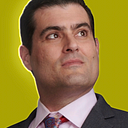The Scientific Paper is a Fraud
Dear Magicians,
Sir Peter Medawar dropped a bombshell in his 1964 essay, Is the Scientific Paper a Fraud? He argued that the traditional format of scientific papers — introduction, methods, results, discussion — creates an illusion. It makes science seem linear, objective, and straightforward. But real science? It’s messy. It’s intuitive. It’s full of surprises and often salesmanship that would make Glengarry Glen Ross’s “Shelley The Machine” Levene green with envy.
Fast-forward 60 years, and Medawar’s critique is even more relevant. The number of scientific journals has skyrocketed — from 500 in 1964 to over 14,000 in 2024, 2800% growth, vastly outpacing inflation and even my stockpile of $TRUMP meme Coin. I discussed this dreadful situation with my friend Andrew Huberman.
Quantity has exploded, but has quality? Hardly. Predatory journals publish garbage, p-values are hacked, and journal shopping for favorable referees — in some cases with no referees — is rampant. Real discoveries, full of twists and mistakes, are often polished into something unrecognizably perfect.
Here’s what Medawar believed: Science isn’t about we scientists looking like Walking Wikipedias, spitting out objective facts. It’s about intuition. Creativity. Following the wrong trail until it leads somewhere remarkable. And he warned: how we write and teach science today hides all that.
4 Ways We’re Misleading the World About Science
- The Recipe Book Fallacy — Imagine Hell’s Kitchen, where every dish comes out perfectly. No burnt pans. No tweaking the recipe. Gordon Ramsey’s face reflects bliss as Wellington after Wellington comes out perfectly. The show’s ratings would tank. But that’s how papers present science — a perfect recipe. But real science? It’s trial and error and a lot of experimenting.
- The Detective Story in Reverse — Papers are written like Matlock, but with the ending revealed first. In reality, science is full of wrong turns and lucky guesses. Alexander Fleming’s discovery of penicillin? Moldy petri dishes. The Cosmic Microwave Background? An annoying radio hiss obscuring the first telecomm satellites. Would today’s paper format even allow these stories?
- The GPS vs. Explorer Analogy — Papers act like science is a GPS route: straight from question to answer. But it’s more like exploring uncharted land — detours, dead ends, and unexpected discoveries. The male birth control pill led to antidepressants. That’s science.
- The Instagram Illusion — Papers are like Instagram posts — curated highlights that hide the mess behind the scenes. For every polished conclusion, countless failures never make it to print.
Why This Matters
When we hide the messiness of science, we set impossible expectations. We teach students that success is always clean and flawless. Worse, we risk losing the trust of the public. People believe science should always work perfectly, so they start doubting when it doesn’t match Instagram influencers’ curated levels of magical tidiness.
Medawar believed that the way we tell the story of science needs to change. Let’s show the trial-and-error process. Let’s celebrate the creativity behind every breakthrough. After all, some of the greatest discoveries were born from “mistakes.”
Closing Thoughts
Medawar closed his essay with this sage advice: “The intensity of the conviction that a hypothesis is true has no bearing on whether it is true.”
The best scientists question their ideas. The more passionate they are the more they doubt themselves. Real science is messy. And that’s where the magic happens.
And speaking of magic, until next time, have a M.A.G.I.C. Week,
Brian
Appearance
I loved talking science shop with my friend Andrew Huberman. Leave a comment and let me know what you thought.
Genius
My friend Curt Jaimungal interviewed The “Godfather of AI” — Geoffrey Hinton — who Now Fears His Own Creation. Hinton is a close collaborator of my guest on The INTO THE IMPOSSIBLE Podcast this week Terry Sejnowski.
Image
My friend Mario Juric posted The first public image from the Vera Rubin Observatory’s Simonyi Survey Telescope. Now ponder getting 21x this, every ~40 seconds, ~8hrs/night, for 10 years. That’s what’s coming by the end of this year. This instrument will revolutionize science, and I’m so glad the Simons Observatory will be working closely with scientists from Rubin to unlock the secrets of the early universe.
Conversation
In this episode of Into the Impossible, I interview Dr. Terry Sejnowski, a leading neuroscientist and AI expert, about his book The Deep Learning Revolution. We discuss the strengths and limitations of AI models like ChatGPT, including the “mirror hypothesis,” which suggests AI reflects the quality of user input. We also explore the future of human-AI collaboration, the potential for AI to transform intelligence, and the ethical considerations we must navigate. If you’re fascinated by the future of AI, this is a must-watch!
Advertisement
Who will leave the 1,00th review of
The INTO THE IMPOSSIBLE Podcast??
Apple Podcasts and Spotify are dueling it out. iTunes started strong, but Spotify is rapidly rising. They’re both at just under 1,000 reviews/ratings… so can you do me a fast favor? Please leave a rating and review of my Podcast!
On Apple devices, click here, scroll down to the ratings, and leave a 5-star rating and review.
On Spotify, it’s here.
Thanks so much for your support!
Upcoming Episode
Christof Koch will be on The INTO THE IMPOSSIBLE Podcast soon. As a pioneering neuroscientist who collaborated with Francis Crick for over 15 years, Koch has been at the forefront of consciousness research and recently lost a fascinating 25-year bet to David Chalmers about our understanding of consciousness. As Chief Scientist of the Allen Institute’s MindScope Program and author of “Then I Am Myself the World,” he leads groundbreaking research on consciousness while exploring it through physics, psychology, and neuroscience. What questions do you have for this world-renowned expert on consciousness and the brain?
